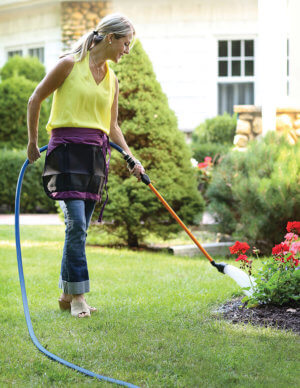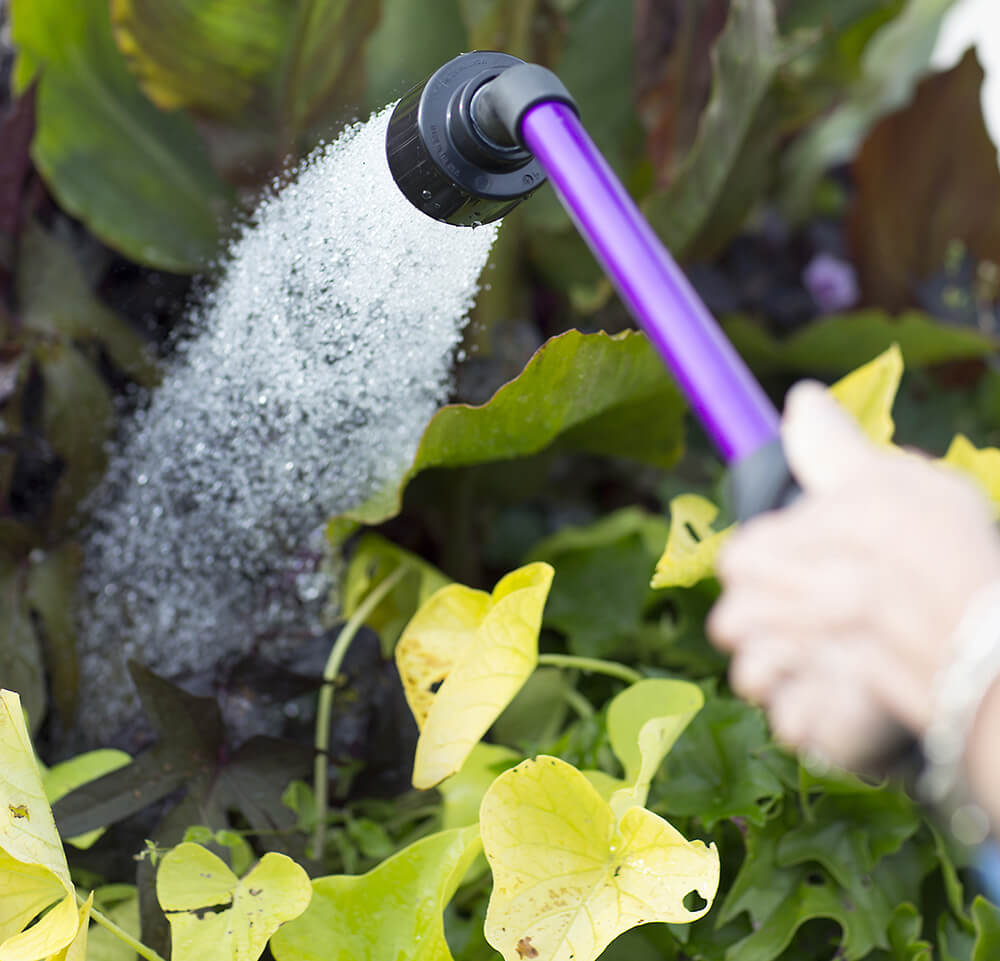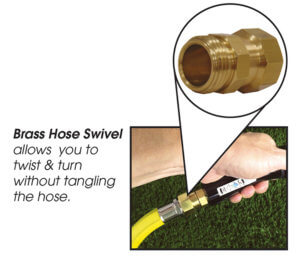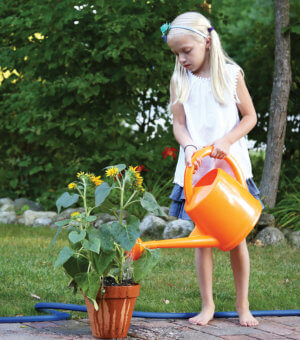Wise use of water on gardens & lawns saves money, conserves water and produces optimum growing.
Watering Technique
 Direct watering tool nearest to the soil. This distributes water to the soil, rather than onto plant surfaces, reducing evaporation and bacterial & fungal diseases such a botrytis and mildew.
Direct watering tool nearest to the soil. This distributes water to the soil, rather than onto plant surfaces, reducing evaporation and bacterial & fungal diseases such a botrytis and mildew.
Choose a tool with an easily operated shut-off valve to prevent water waste between plants.
90 – 98% of plant matter is water.
The most essential task to ensure healthy plants is to provide sufficient amounts of water. Many naturally occurring nutrients, or added supplements, are valueless unless they are first dissolved in water.
Water applied in small quantities is more harmful than helpful. Only the very top layer of soil is listened, which causes plants roots to grow upward, subjecting them to rapid drying and damage.
Apply generous quantities of water, in a single application, to thoroughly soaker soil allowing roots to grow deep. Prime growth requires almost 1 gallon of water per sq. ft. of soil weekly.
Conserving Water
- Water in the early morning or evening hours to reduce evaporation.
- Minimize water loss, from run-off or evaporation, utilizing a Rain Wand™ or other hand watering device instead of garden sprinklers.
- When watering containers, use a watering can to deliver specific amounts of water.
- During drought, use grey water such as bath water and dishwater for watering plants.


